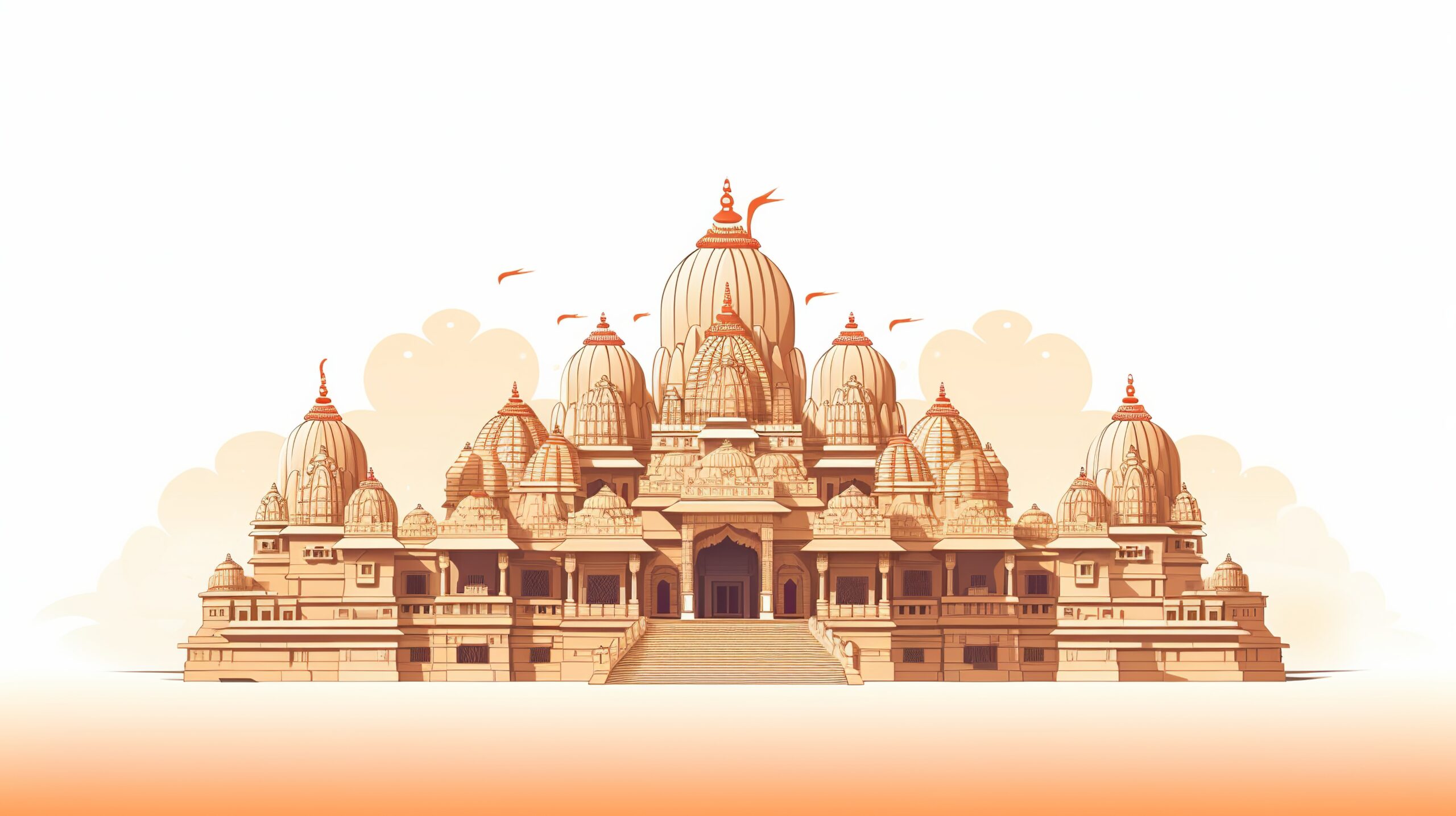On August 5, 2020, after a groundbreaking ceremony, which is known as the Bhoomi Pujan, the formal construction of the Ram Mandir that is dedicated to the Hindu God, Lord Ram started. Ram Mandir is symbolic of various aspects deeply rooted in Hinduism and Indian culture. Ram Mandir is believed to be the site where Lord Rama was born. This site was previously the location of Babri Masjid.
Some of the symbolic meanings associated with the construction of the Ram Mandir in Ayodhya are:
- Religious Significance of Ram Mandir– The temple is a symbol of devotion to Lord Ram, who is one of the most revered deities in Hinduism. Lord Ram is considered the seventh avatar of Lord Vishnu and is a symbol of virtue, righteousness, and the ideal ruler. So, this mandir is a representation of reverence for Lord Ram.
- Cultural Identity– The temple represents the cultural and religious heritage of India. The story of Lord Ram, as depicted in the epic Ramayana, is an integral part of the cultural fabric of the country.
- Symbol of Unity- The construction of the Ram Mandir is often seen as a unifying factor for people who identify with the cultural and religious significance of Lord Ram. It is considered a symbol of national unity and identity. Ram Mandir is seen as a means of preserving and promoting India’s cultural heritage. The story of Lord Ram, as narrated in the epic Ramayana, is deeply ingrained in the cultural fabric of the country, and the construction of this temple brings people from all walks of life together.
- Historical Resolution of Conflict- The construction of the temple signifies the resolution of a longstanding historical and legal dispute related to the Ayodhya site. The Supreme Court’s verdict in 2019 paved the way for the construction of the temple and provided a legal resolution to the decades-old issue.
- Architectural Significance- The temple’s design and construction adhere to traditional Hindu temple architecture, reflecting the cultural and architectural traditions of ancient India. It is intended to be a masterpiece showcasing the rich heritage of Indian craftsmanship.
- Expression of Faith- For millions of devotees, the temple is a tangible expression of their faith and devotion to Lord Ram. Pilgrims and followers believe that visiting the temple and offering prayers will bring blessings and spiritual fulfillment.
- Promotion of Peace- The completion of the Ram Mandir is seen by many as a step toward fostering peace and harmony among various communities in the region. It is viewed as an opportunity for reconciliation and understanding
The construction of the Ram Mandir is the result of a longstanding legal and socio-political issue related to the disputed site in Ayodhya. The Supreme Court of India, in a landmark judgment in November 2019, granted permission for the construction of the Ram Mandir and allocated an alternative site for the construction of a mosque.
The construction of the Ram Mandir has been funded by donations from individuals and organizations across the country. The Shri Ram Janmabhoomi Teerth Kshetra Trust is responsible for overseeing the fundraising and construction activities. Skilled artisans and craftsmen are involved in the construction to make sure that the traditional and aesthetic aspects of the temple are maintained. the Supreme Court’s verdict in 2019 provided a legal framework for the construction of the temple, bringing closure to a contentious issue
What is going to happen on 22nd January?
On January 22 the Pran Pratishtha ceremony of Ram Mandir will happen. It is going to be a huge affair and a lot of dignitaries will attend the ceremony. The proceedings of the event are to be handled by Shri Ram Janmabhoomi Teerth Kshetra Trust. The Vedic rituals for the Pran Pratishtha ceremony commenced on January 16th as decided. The length of the temple is 360 feet and its width is 235 feet. The total area of the temple is 2.7 acres. The built-up area is 57,400 sq ft. The temple has 3 floors. The construction of Ram Mandir is viewed as a symbolic victory of Indian culture and Hinduism. It is a culmination of decade decade-old promise made by Indian Prime Minister Shri Narendra Modi.
The life and teachings of Lord Ram, as depicted in the Ramayana, serve as a source of inspiration for moral values, righteousness, and virtuous living. The temple is a place to reflect on these values. People visiting the temple will learn a lot about our culture when they visit the temple.
The Ram Mandir is expected to attract millions of pilgrims and tourists, contributing to the local economy and tourism industry. Pilgrims visit such sacred sites seeking spiritual solace and a connection with their faith
The temple holds immense religious importance for millions of Hindus who consider Lord Ram as a central figure in their faith. It serves as a sacred place for devotees to express their devotion and seek blessings. Prime Minister Shri Narendra Modi will be participating in the Pran Pratishtha ceremony.
Timing of Pran Pratishtha ceremony
The consecration of Lord Shri Ram within the temple is scheduled to take place between 12:15 pm and 12:45 pm. Pran Pratishtha means that divine energy will enter the idol thus lending the temple both sanctity and spiritual significance. The devotees are eagerly looking forward to the sanctification of the Ram Mandir. It will be a pivotal moment in the history of the country. Because of the Pran Pratishtha ceremony a half-day government holiday has been declared.
The opportunity for the devotees to seek blessings is from 7 AM to 11:30 AM. Temple darshan will open again from 2 PM to 7 PM. This extended timeframe will enable the worshippers to delve into spiritual contemplation as well as connect with the holy environment at varied points all through the day, thus making sure that people who are seeking divine experience get exactly what they want. However, on 22nd January public darshan is not allowed due to security reasons.



